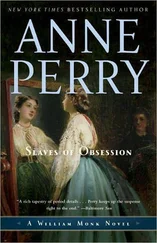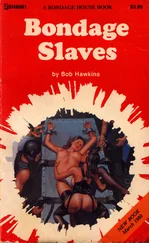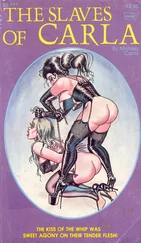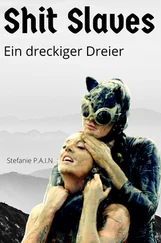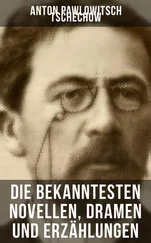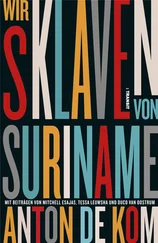Notwithstanding all the torments with fire and blows, we [Dutch soldiers] were never able to compel her to answer, for notwithstanding all this she remained as stubborn as ever, and by pointing at the sky, grasping a long lock of hair on her head, slapping her mouth with her fingers, and running her hand over her throat, she let us know she would rather have her head cut off than disclose any information, whether by speaking or by pointing the way . (p. 96)
De Kom concludes that in this episode “defenseless Surinamese women fell into the hands of supposedly civilized Dutchmen who murdered them” and concludes with the words, “Brave Séry. Brave Flora. We will always commemorate and honor your names” (p. 97).
This rewriting and reversal of the narrative focus, shifting the center of attention from Molinay’s failed expedition to the women’s heroism, serves a crucial literary purpose. De Kom first situates us in Séry’s perspective, looking through her fiery eyes, and then makes her central to a documentary historical narrative. Instead of being presented with stereotypes of enslaved Black people, we read about named individuals in old, historical Dutch.
In his manifesto of the Harlem Renaissance ( The New Negro , 1925), Alain Locke writes that Black authors should portray an African-American as a fully fleshed literary character, and no longer as “more of a formula than a human being” (p. 3). He urges them to avoid stereotypes like those in Harriet Beecher Stowe’s Uncle Tom’s Cabin in favor of realistic characters that do not let themselves be defined by others but instead define themselves. That is exactly what De Kom does in this passage, presenting the women as the decision-makers, in control of the situation, even though they die.
De Kom employs another literary strategy also found in the work of Du Bois, using white history (such as Wolbers’s work) as documented fact, as evidence for the truth of his own narrative. For example, De Kom keeps insisting that his book gives the “facts.” He repeats this many times: “Once again, we would like to start by presenting a few facts by way of example” (p. 70). This is a rewriting of what is already in the archive.
Facts Forgotten and Facts Suppressed
And that cultural archive was bulging with material. 1De Kom devotes one whole gruesome chapter to the “punishments” inflicted by the plantation owners, with details drawn from historical documents. In We Slaves , De Kom uses these documents to give literary form to facts forgotten and facts suppressed, so that the reader can no longer dismiss them as trivial.
Until the publication of We Slaves , much of the Dutch population felt that slavery in Suriname had been far away and irrelevant. They told themselves it couldn’t have been as bad as all that. Yes, perhaps there had been a few unfortunate incidents – so the argument went – but that was a question of a few rotten apples spoiling the reputation of all plantation owners. Meanwhile, the investors in Surinamese plantations had often been banks or individuals in the Netherlands. African-American literature contests this “bad masters defense,” often with horrifying facts and stories, and De Kom proceeds in exactly the same way, showing that the Dutch justice system had horrifying consequences. Because enslaved people were not seen as human beings but as possessions, public massacres came to be considered normal. The torture method known as the “Spanish billy goat” played a central role in all this; almost everyone has seen the prints by John Gabriel Stedman and William Blake. Surinamese slavery is known, despite continuing debate in some quarters in the Netherlands, as the cruelest form practiced by any Western power.
Another form of cruelty discussed by De Kom at length is the systematic sexual exploitation of “our mothers.” They “worked” for their owners and produced still more Dutch chattels: the children they bore. His trenchant analysis shows that this practice was inspired not by any Christian ideology, but by the deep-seated Dutch love of the koopje , the cheap buy. To De Kom, the combination of putative Christianity and the desire for a cheap buy is unique to Surinamese slavery.
De Kom also rewrites the rainforest expeditions against the maroon leaders Joli Coeur, Baron, and Boni, describing them from those leaders’ perspective and telling the stories of their individual backgrounds. He sets them in direct contrast to the governors heading the Dutch colonial administration and shows the reader that their conduct is more civilized than that of the “whites.” He writes, “We defy one and all to show us that whites have ever, at any time in Surinamese history, treated colored people this way” (p. 115)! Role models like these, “our fathers and mothers,” as De Kom consistently calls them, are the book’s literary heroes.
They were counted among the brutes, as the whites called the maroons in those days, but to us they are and will remain heroes of Suriname, who won their proud status as leaders through bravery and virtue, fighters for the rights and liberty of Surinamese slaves. Baron! Boni! Joli Coeur! Your memory will be forever cherished in our hearts. You are part of us. (p. 120)
Here De Kom places a literary image in the heart of the reader, so to speak – one which drives out any colonialist image of the maroon leaders. This revisioning from the perspective of the oppressed is central to the narration of the story of slavery. As Frederick Douglass reflected at the end of his life, “My part has been to tell the story of the slave. The story of the master has never wanted for narrators” (Douglass, pp. 310–311).
The Personal Decolonization of White Education
In the African-American literary tradition, we see similar depictions of heroes from the eighteenth century onwards. In 1853, Douglass wrote an essay about the heroic slave Madison Washington, and in The Souls of Black Folk , Du Bois grounded the Black thinker, teacher, and minister Alexander Crummell in the history of the American Reconstruction era. What such examples show is that the sense of inferiority stemming from enslavement, which De Kom discussed with the same sensitivity as Frantz Fanon, can be combatted through literary valorization. This amounts to the personal decolonization of white education. After his banishment, De Kom spent a great deal of time in the National Archives in The Hague and read the materials available to those outside the academic system.
Among African-American writers, the struggle to obtain information from outside the establishment was likewise crucial to the development of self-knowledge and self-confidence. To borrow books from the Chicago library, Richard Wright needed a note from a white sponsor. As he wrote in “The Ethics of Living Jim Crow,” “I would write a note to the librarian, saying, ‘Please let this n----- boy have the following books.’ I would then sign it with the white man’s name” (p. 14).
In prison, Malcolm X re-educated himself from the ground up by memorizing the dictionary. On the first page, he was struck by a word that comes from Afrikaans: “aardvark.” And the young Frederick Douglass challenged other boys to write words down so that he could learn them.
The very act of writing undermines colonialist prejudices about the supposed unintelligence of enslaved people. Such prejudices formed the pretext for denying them formal education. In 1845, Frederick Douglass published his autobiography, Narrative of the Life of Frederick Douglass, An American Slave . This slave narrative immediately became a huge success, and part of its radicalism lay in its subtitle, Written by Himself .
Читать дальше


